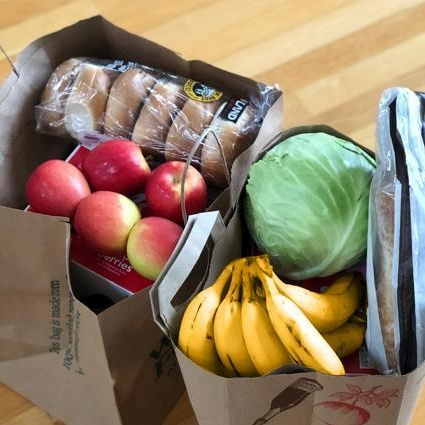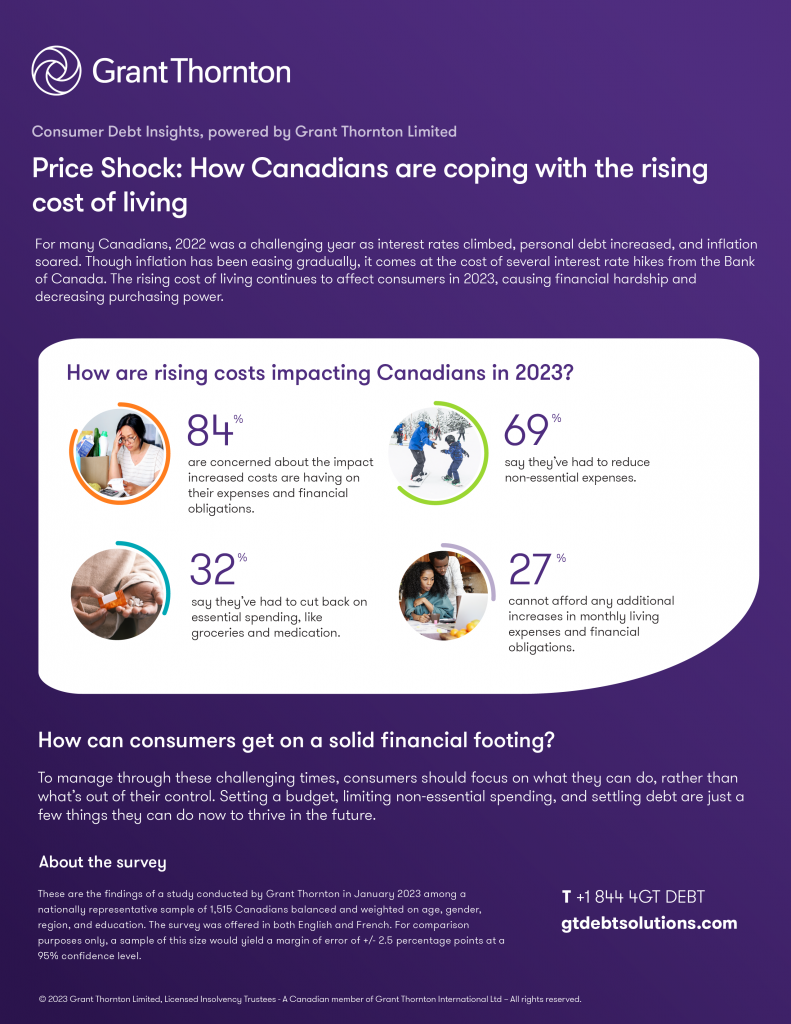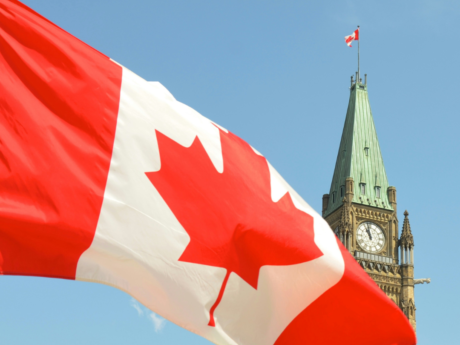Price shock: How Canadians are coping with the rising cost of living

Canadians feel the heat as rising inflation, increasing interest rates, and higher debt loads scorch their finances.
After slashing interest rates to near zero early in the pandemic, the Bank of Canada raised its benchmark interest rate eight times over the last year to tame inflation— the highest level in decades. On top of that, total consumer debt climbed to $2.46 trillion, with average non-mortgage debt per consumer sitting at more than $21K.
Rising costs are taking a toll on nearly all Canadians. However, the impact is felt more acutely by low-income households and those carrying debt. In fact, according to our recent survey, more than a quarter of Canadians (27%) say they can’t afford any additional increases in monthly living expenses and financial obligations; low-income households (<$50k) are more than twice as likely as high-income households ($100k+) to say this.
Further insights from our survey are illustrated in the following infographic.

If you’re one of the many Canadians struggling to make ends meet due to increased living expenses and debt, we can help. Book a free, no-obligation consultation to learn more.
Take the first step to debt freedom
Speak to one of our debt solutions professionals during a free, no-obligation consultation.
Related articles

What Canada’s 2025 federal budget could mean for your taxes—and your wallet

4 common investment scams and how to avoid them

Is AI your new best budget buddy?

Should I get a store credit card?

5 questions to help you plan a debt-free wedding

The rising cost of friendship in Canada

What happens if your employer goes bankrupt?
Looking for assurance, tax, and business advisory services? Visit Doane Grant Thornton LLP.

Loading